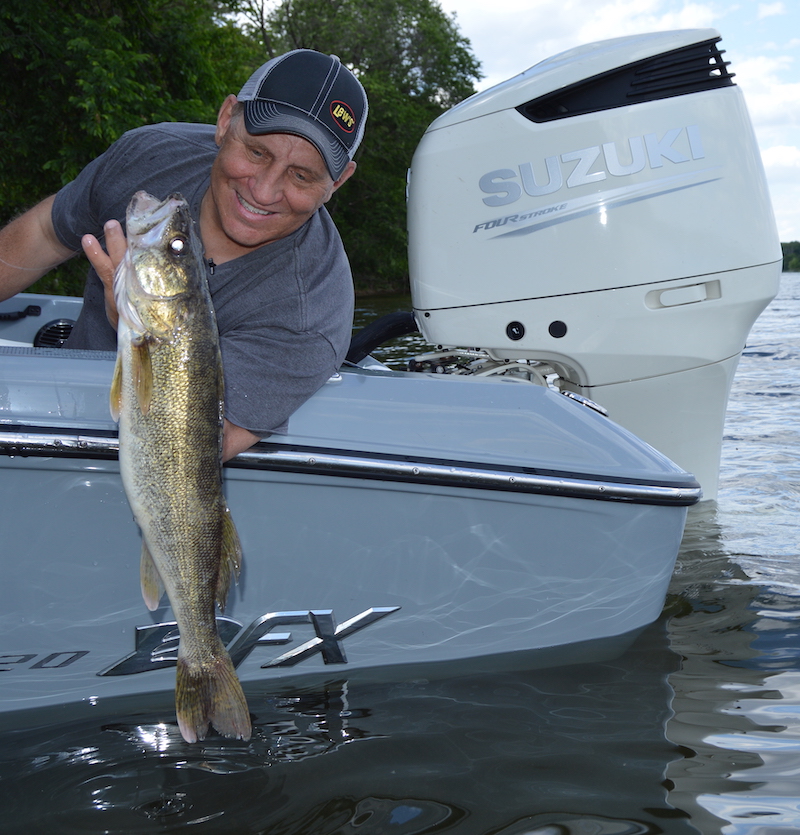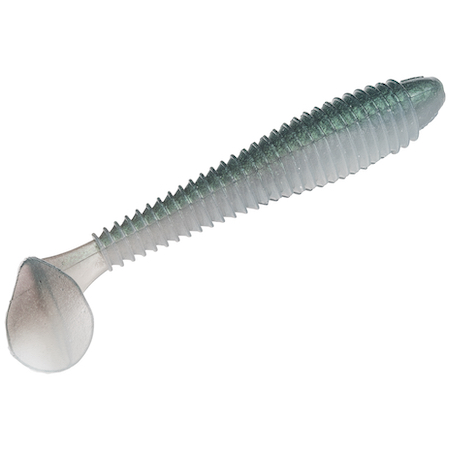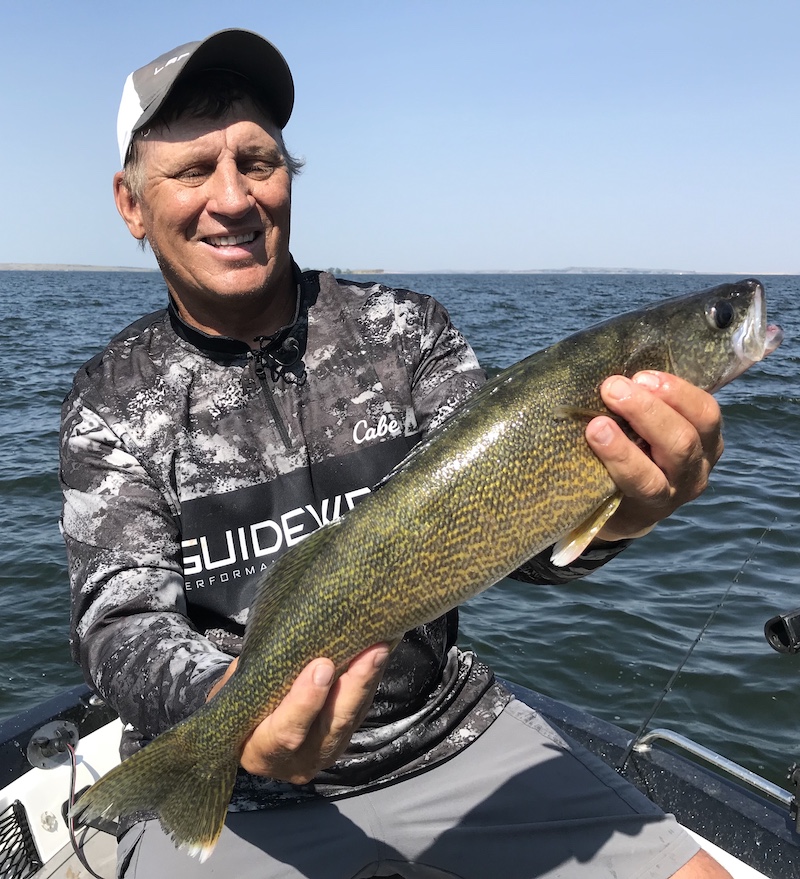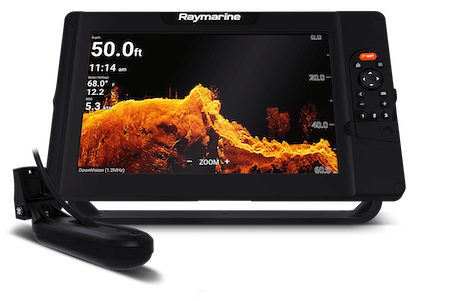News & Stories
ADJUST FOR MORE WALLEYES!
Posted by director on June 14, 2019

A recent conversation with a veteran tournament angler about an adjustment he and his partner made in a walleye tournament has me thinking about the importance of adjustments and refinements to fishing presentations that, while sometimes slight, can add to fish catches significantly.
The conversation referenced above involved the angler and his partner modifying their slip-sinker live bait rigs, often called “Lindy” or “Roach” rigs, by adding small, cylindrical floats to their lines a bit above their hooks.
The duo was “rigging” with big minnows and felt the floats offered several advantages. First, the big chubs they were using would “fight” against the float’s buoyancy, ultimately adding to the liveliness of the minnows. Bait liveliness is often a key to successful rig fishing.
Second, the floats added some color for attraction. And, finally, the floats helped to keep the minnows above the emerging sand grass present in the areas the anglers were fishing.
Using this refinement helped the guys finish a very close second to the winners in a tough field of 100 other teams. Obviously, the guys were around good fish, but they felt the addition of floats to their rigs was certainly crucial in helping them to their good tournament catch.
A year ago, last spring, another top angler I know revealed that he and his fishing partners had very good successes pitching small minnow-tipped jigs to shallow water. There certainly is nothing unusual about pitching a jig and minnow for walleyes in spring.
What is a bit unusual about their pattern, however, is the color jigs they pitched. Starting with their favorite chartreuse, lime green, and “firetiger” patterns, the guys were forced to experiment when their favorites weren’t producing in the “clearer-than-normal” waters they encountered. Eventually, the guys found that black jigs were the top producers and used that color to produce several days of top catches.
This past spring, lots of snow and run-off meant high, dirty water in lots of lakes that I fish. Pitching jigs and minnows produced some fish, but a better alternative was a jig and plastic paddle tail combination. The paddle tail adds action and disturbance in the water that helps fish in off-colored water “hone in on” the bait.
 In fact, the new 3 ¼-inch size Rage Swimmers that I have been pitching on my jigs have produced good catches from less-than-clear waters this spring and early summer. Not only that, but as I use this bait more it appears to do a good job of triggering reaction bites from walleyes in clearer waters as well!
In fact, the new 3 ¼-inch size Rage Swimmers that I have been pitching on my jigs have produced good catches from less-than-clear waters this spring and early summer. Not only that, but as I use this bait more it appears to do a good job of triggering reaction bites from walleyes in clearer waters as well!
This refinement, in fact, has me thinking that I have been missing out on some good catches by not trying plastics when the traditional jig-and-minnow combinations have not been producing.
You can bet the jig/paddle tail combination has found a permanent place on my casting deck now!
Next time you are on the water and your tried-and-trued rigs and baits aren’t producing, consider experimenting, adjusting, and refining and you might just find the key to saving the day. And, maybe you’ll find a new bait that finds a permanent home on your casting deck as well!
As always, good luck on the water and remember to include a youngster in your outdoors adventures!
Mike Frisch hosts the popular Fishing the Midwest TV series and is a co-founder of the Bass Pro Shops and Cabela’s School of Fish. Visit fishingthemidwest.com to learn more!
PHOTO – The author releases and a shallow water walleye caught recently!
DEEP WATER WALLEYES
Posted by director on June 13, 2019

When a person is preparing to go fishing, it’s a good idea to keep in mind that the fish might not be where we expect them to be. I forgot that fact recently, and it impacted my catching in a negative way. We caught lots of fish, but if I had been better prepared, we would have caught more. Here’s what happened.
In early June I took my annual trip to Kabetogama Lake in northern Minnesota. Kab is one of my all-time favorite lakes for several reasons, but one of the primary reasons is that it’s full of walleyes in all sizes that are almost always willing biters. My fishing partner was Travis Carlson. I’ve fished with Travis on many of my trips to Kab. He’s an outstanding angler and an outstanding fishing guide.
I’ve been on Kab several times during the first week of June, and we caught the walleyes shallow on all of those previous trips. At that time of the year they’re in water from 4 to 8 feet in depth, so that’s how I prepared to fish on this trip. Unfortunately for me, most of the walleyes weren’t shallow. We caught a few on rocky shorelines, but not as many as we expected. Travis suggested we do some sonar work in deeper water to see if we could find the fish. We started out looking in 15 to 18 feet of water, saw nothing so moved deeper. Finally, we saw signs of life in water 27 feet deep, and as we moved deeper we saw more signs of life. We were seeing fish in water almost 40 feet deep. We were using Raymarine’s new Element sonar. This was my first time on the water with it. It was easy to use, and although the walleyes were hugging the bottom, it displayed them very well. There was never a doubt that we were seeing fish.
Once we located the walleyes, we started fishing. This is where the preparation part comes in. I was planning on fishing lightweight jigs on light line in the shallows, so the only rods that I had in the boat were designed for doing that. The equipment that I brought along wasn’t designed for fishing heavy jigs. I used the equipment that I had, but could have caught way more fish with the appropriate gear.
I was using 6 pound test monofilament line. Mono has some stretch in it, so setting the hook in the deep water was tough. I should have brought along 1 of several rods that I have spooled with 15 pound test XTCB8 braided line. It has about the same diameter as 6 pound test mono, but it has no stretch and is super-sensitive. It provides outstanding hooksets also.
I also would have gone to a bit heavier rod. The rod that I was using was a medium light action. If I had been prepared I would have brought along my Lew’s Custom Speed Stick in a medium action. This rod is as sensitive as it gets, and the additional power would have helped with hooksets.
For some reason, I put my box with big jigs in the boat, but certainly didn’t expect to use them. 3/8thounce Fire-Ball jigs caught a bunch of our fish. The walleyes didn’t care about color, and they also didn’t care if we tipped with fathead or shiner minnows. Both produced.
I was another wonderful trip to a wonderful place, and I re-learned that preparation pays. Golfers don’t take just 1 club when they go golfing. The use different clubs for different situations, and anglers should have rods for at least a couple different scenarios when they go fishing. If you do, you’ll catch more fish and enjoy your fishing even more.
Photo Caption-Travis Carlson with a deep water Kabetogama Lake walleye.
PRIME TIME WALLEYES
Posted by director on May 20, 2019
 Prime Time Walleyes!
Prime Time Walleyes!
By Mike Frisch
June can be a great month to be on the water chasing walleyes! The rigors of the spawn are in the past meaning that hungry fish are usually biting, and the weather can be very cooperative now too.
Classic walleye structure like major points jutting out from shoreline flats and main lake islands and humps often begin holding walleyes during this time. A great way to find these structure fish, particularly during daylight hours, is by cruising the drop-off edges of the structure looking for the presence of “marks” on your depth finder.
Daytime walleyes often like these edges, preferring to move shallower during low light, peak feeding periods. Another advantage of early summer is that these “edge” fish can often be tempted to biting during day fairly easily now too.
A key to this fishing starts with locating a good concentration of fish on the depth finder/GPS unit, marking the spot, and then to begin fishing. Being around plenty of fish is obviously important to upping the odds for fishing success. The new Raymarine Element sonar units I have been using recently do a great job of showing me fish, even those tight to the bottom, and are super easy to use as well.
When fish are located, various lure presentations will often trigger bites. Classic walleye tactics using jigs and slip-sinker live bait rigs baited with leeches, nightcrawlers, and minnows will often yield positive results.
For me, however, I like to up my odds for success by fishing a leech or crawler on a plain live bait snell pulled behind a heavy bottom bouncer like a two-ounce Rock-Runner bouncer. This set-up allows me to quickly cover water searching for active biters and, particularly when fished fairly vertically, imparts a stuttering action to the bait that seems to trigger bites better than many other rigs and jigs.
The heavy gauge wire of the Rock-Runner bouncer is important to imparting the stuttering action I favor, and, for a bit of added attraction, I prefer a #4 Super-Glo attractor hook in either orange or pink to carry the leech or crawler. I’ve seen many days where that added speck of color on the hook made a big difference in upping our daily walleye catches.
When crawler rigging, it’s often helpful to tie in a second #4 hook to the snell as well. That second hook can be very helpful in hooking those short-biting walleyes!
This rigging not only does a great job of triggering bites but can be fished quicker (often effectively around .8 mph) than other presentations, meaning I can cover more water and put my baits in front of more fish during the fishing day than with other presentations.
A typical early summer fishing day with this rigging often involves checking several potential fish-holding spots and only when fishing when fish are “seen” on the locator. Several quick passes through an area often yields a few fish and then it’s on to the next spot.
Early summer and walleye fishing often go hand-in-hand for many anglers. Putting the tips just offered here to use is a good way to spend a summer day and will often lead to a fresh fish dinner too!
As always, good luck on the water and remember to include a youngster in your next outdoors adventure!
Mike Frisch hosts the popular Fishing the Midwest TV series. Visit Fishing the Midwest’s new website www.fishingthemidwest.com to learn more.


